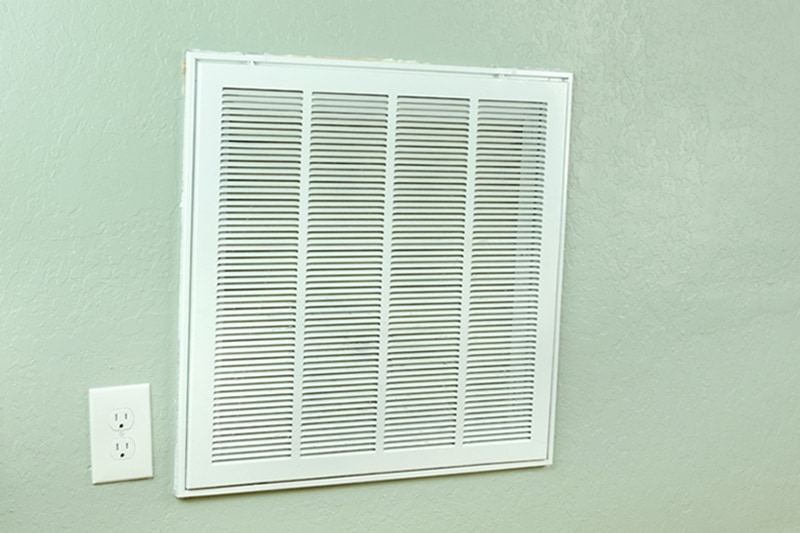What You Should Know About Air Handlers

A heating, ventilation, and air conditioning (HVAC) air handler unit, or AHU, may resemble a furnace in appearance, but its purpose is very different. It conditions and circulates both cool and hot air, depending on what time of year it is.
An air handler works in tandem with your air conditioner or heat pump to help you get the most efficiency from your HVAC system. As you take in these details on air handlers, our Ozark Mountain Air professionals are happy to answer any questions you may have.
What Exactly Is an Air Handler?
An air handler looks like a furnace in that it is usually a cased unit, like a furnace. Typically it is located inside your Bentonville home and contains a blower, evaporator coil, and many components of your ventilation system, such as sound attenuators, filter racks or chambers, and dampers.
The air handler is the inside component of your HVAC system––working with your split-system air conditioner or heat pump. Usually air handlers connect to existing ductwork, distributing the conditioned air through your Arizona home and returning it to the air handler. The air handler blows the air (where the heat has been removed by the evaporator coil) through the air ducts in your home.
Air handlers come in different sizes. Smaller units may only have an air filter, blower, and coil. These are called terminal units, blower coils, or fan coil units. A larger air handler, known as a makeup air unit (MAU), conditions 100 percent outside air, no recirculated air. An air handler only designed for outdoor use and usually on roofs is called a rooftop unit (RTU); this type is generally for commercial use.
How Do I Know If I Need One?
If you are in the market for a new HVAC system, and you are considering a conventional gas furnace and air conditioner, you most likely will not need an air handler. On the other hand, if you are considering an electric heat pump, an air handler will probably be part of your purchase.
Often air handlers contain heat strips to provide additional heating, which cause them to sometimes be mistaken for electric furnaces. True electric furnaces are completely different in workings and purpose than an air handler. The air handler heat strips are only there to assist in providing heat when the temperatures are a little lower, but not low enough to require a furnace.
A general rule of thumb in determining whether you need to purchase an air handler as part of your HVAC system is to take a look at the temperatures where you live, like here in Bentonville. The US Energy Information Administration (EIA) reports since 2015, separate efficiency standards were set for different heating and cooling systems in both northern and southern regions. An air handler, when necessary, can help with these efficiencies.
If you live in an area with mild temperatures that rarely see cooler numbers on the thermometer, say in a balmy climate, you will most likely need an air handler. In this situation, a split-system air conditioner with an outdoor condenser and indoor air handler is frequently used. If you live in the South where you may experience some cooler temperatures but generally see higher ones, you will most likely be installing a heat pump and an air handler. If you live in the North, especially the upper North where temperatures definitely dip into frigidity, you will want a high-efficiency gas furnace but no air handler.
We Are Your Air Handler Experts
There are many factors to consider when it comes to air handlers. If you have any questions on whether you need an air handler as part of your HVAC system, call 479-521-2370 or request service online to talk to one of our Ozark Mountain Air experts here in Bentonville, AR. We are always happy to discuss air handlers.
Need HVAC Service?
Contact the experts at Ozark Mountain Air.
Call us at 479-521-2370!

